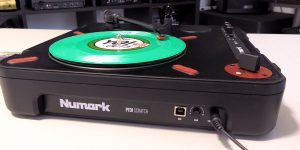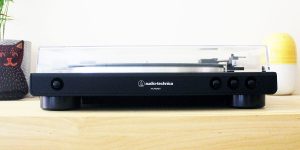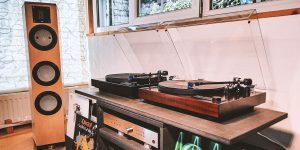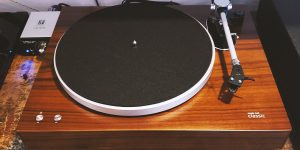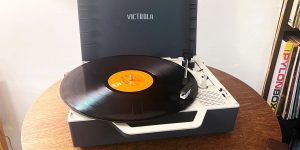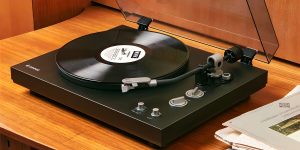So, you are a happy owner of a vinyl turntable and a fairly experienced user who wants to discover new horizons of this equipment. Do you want to find out how you can enhance the sound quality, reduce unwanted noise, or improve the overall performance of your turntable? At this point, you may want to apply turntable upgrades and modifications to your device. And this is the right thing to do.
In this guide, I’ll share some tried-and-true modifications to help you unlock your turntable’s full potential.
Basic turntable upgrades
| Modification Type | Expected Results |
|---|---|
| Replacing the cartridge and stylus | Better tracking, reduced record wear, enhanced detail, and accuracy |
| Upgrading the phono preamp | Lower noise floor, better dynamic range, increased flexibility in settings |
| Upgrading the platter mat | Improved resonance control, better isolation, increased detail, optimized record coupling |
| Upgrading the RCA cables | Better signal transmission, reduced interference, improved audio clarity, enhanced overall sound quality |
Replacing the cartridge and stylus
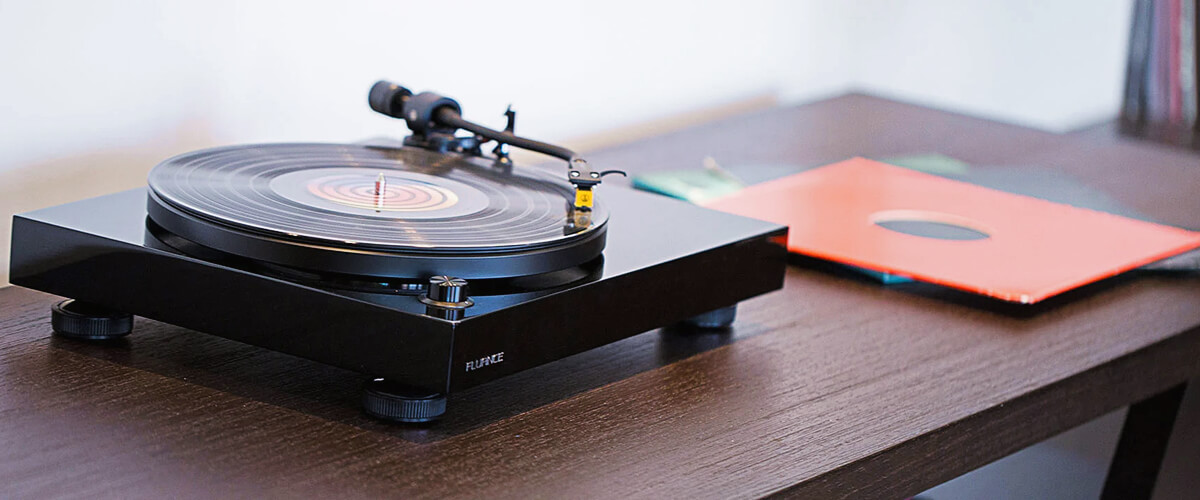
Replacing the cartridge and stylus is the first upgrade in turntable setup that vinyl lovers usually make. The cartridge and stylus are responsible for translating the grooves in your vinyl records into sound, so their quality greatly impacts your listening experience.
When choosing a new cartridge and stylus, consider tracking force, ensuring it matches your tonearm’s capabilities. Remember that cartridge output voltage levels vary, so select one compatible with your phono preamp’s input sensitivity.
Not all cartridges suit every tonearm. To guarantee proper balance and tracking, check if the cartridge’s weight and size are compatible with your tonearm.
It’s worth noting that the stylus shape influences its interaction with record grooves, impacting sound quality. Common shapes include spherical, elliptical, and line-contact. Spherical styli are more affordable and durable but may lack detail compared to other types.
Lastly, consider the cartridge’s frequency response. Opting for a cartridge with a wide and flat frequency response ensures more accurate reproduction of your records.
A step-by-step guide to replacing your cartridge and stylus
If you would like to make the turntable sound quality improvement by changing a stylus or cartridge, follow these steps:
- Turn off your turntable and disconnect it from any power source.
- Remove the headshell from the tonearm, if possible. This will make it easier to work with the cartridge.
- Carefully unscrew the cartridge from the headshell, noting of how the wires are connected.
- Gently disconnect the wires from the old cartridge using a pair of tweezers or needle-nose pliers.
- Connect the wires to the new cartridge, ensuring they’re attached to the correct terminals.
- Screw the new cartridge onto the headshell, and then reattach the headshell to the tonearm.
- Carefully replace the stylus, following the manufacturer’s instructions.
- Adjust the tracking force and anti-skate settings if necessary.
Upgrading the phono preamp
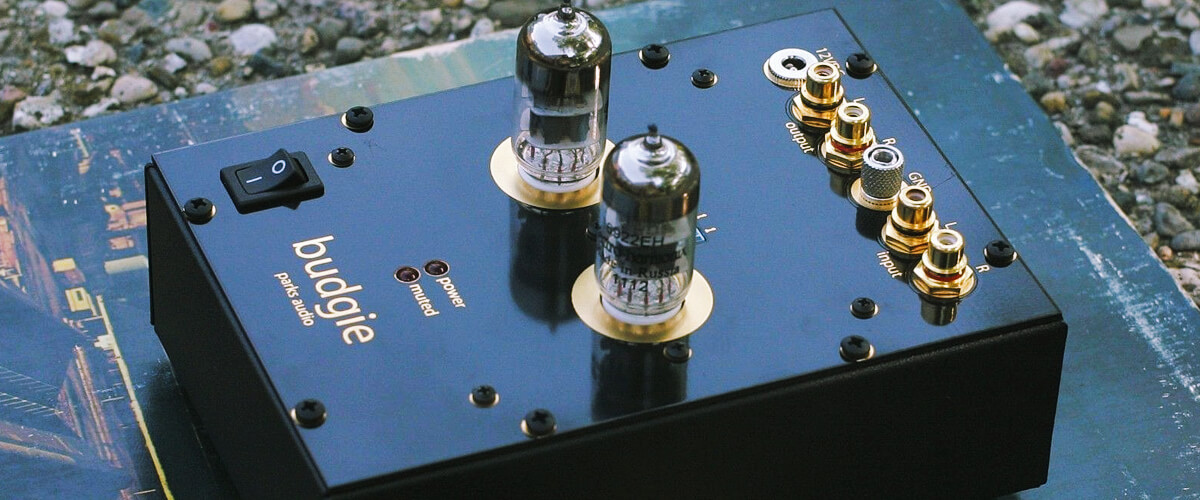
Although many turntables come with a built-in phono preamp, upgrading to an external one can often improve sound quality. External preamps typically feature higher-quality components and offer greater flexibility in terms of settings and features.
When selecting an external preamp, check cartridge compatibility. Ensure the preamp works with your turntable’s cartridge type, either MM or MC. Some preamps support both, while others are designed for one specifically.
Next, factor in gain and impedance settings to match your cartridge for optimal performance. Look for a preamp with a high SNR and low THD to minimize noise and distortion.
Connectivity and input/output options are also important. Choose a preamp with the right connections, such as RCA, XLR, or USB, to suit your turntable and audio system.
Lastly, consider build quality and design, as a well-built, noise-resistant preamp will enhance performance and complement your existing audio equipment setup.
Upgrading the platter mat

Upgrading your platter mat is an effective way to enhance your turntable’s performance and improve sound quality. Platter mats come in various materials, each with characteristics that affect how your records sound.
Felt
Felt mats are widely used due to their affordability and versatility. They provide a smooth surface for your records, reducing static and dampening unwanted vibrations. However, they can sometimes hold dust and might not be as durable as other materials.
Rubber
Rubber mats offer excellent damping properties, reducing unwanted resonance and vibrations. They also provide a non-slip surface, ensuring a stable grip on your records. Rubber mats can be slightly more expensive than felt but offer better durability.
Cork
Cork platter mats have become popular for their natural vibration absorption and anti-static properties. They provide a firm grip on records and can help reduce surface noise. So, they are a good balance between performance and cost.
Leather
Leather mats are known for their ability to dampen vibrations effectively while offering a high-end aesthetic. They can help minimize static and provide a luxurious feel. However, these accessories can be more expensive than other options.
Acrylic
Acrylic platter mats are rigid and can help improve bass response and overall clarity. They offer a tight grip on records and can reduce static. But mats made of acrylic are often considered a premium option and can be more costly than other materials.
Upgrading the RCA cables
The right RCA cables can make a noticeable difference in sound quality, ensuring a better connection between your turntable and audio system. This improvement can make even cheap turntable sound better. When choosing RCA cables, consider cable quality, shielding, connectors, cable length, and price.
Opt for cables made from high-quality materials like oxygen-free copper or silver-plated copper to improve signal transmission and minimize interference. Select wires with multiple layers of shielding for better protection against electromagnetic and radio frequency interference.
High-quality connectors, such as gold-plated ones, offer better signal transmission and durability. Consider cable length to reduce interference and signal loss, choosing the shortest length suitable for your setup. Finally, research reputable brands and read reviews to find a balance between price and quality for the best listening experience.
Advanced turntable upgrades
| Modification Type | Expected Results |
|---|---|
| Upgrading the Tonearm | Improved tracking, reduced distortion, better resonance control, enhanced overall sound quality |
| Upgrading the motor | Better speed stability, reduced noise and vibrations, improved consistency in playback, enhanced audio performance |
| Upgrading the feet and suspension | Increased isolation, reduced vibrations, improved stability, enhanced audio clarity and detail |
| Upgrading the power supply | Lower noise floor, increased dynamic range, better voltage regulation, enhanced audio performance and sound quality |
Upgrading the Tonearm
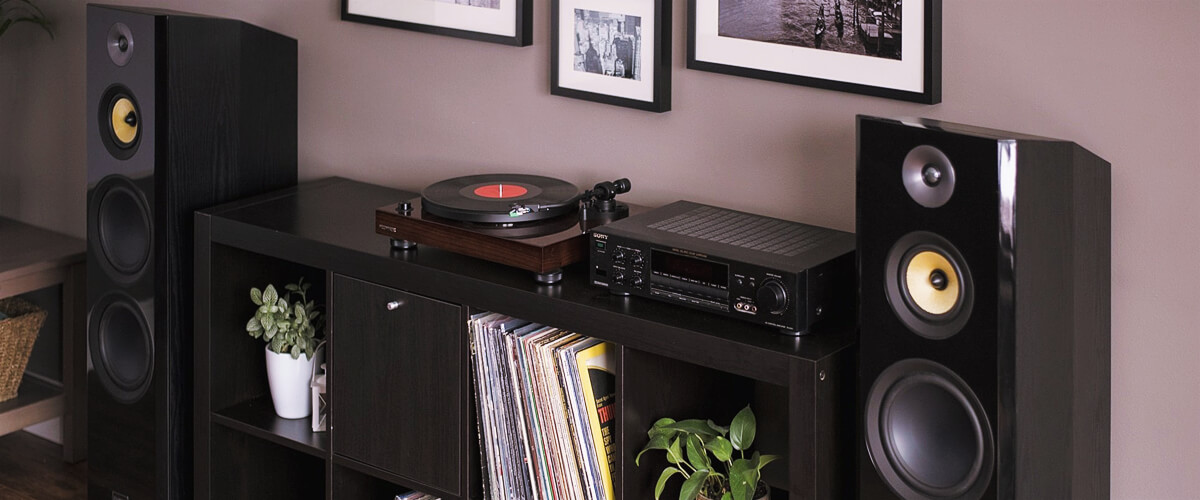
Changing the tonearm is one of the turntable improvements that lead to better tracking, reduced distortion, and better overall sound quality. When choosing a tonearm, consider factors such as design, length, bearing type, mass, material, and adjustability.
Different tonearm designs — straight, S-shaped, and J-shaped — offer unique benefits. Tonearm length impacts tracking performance and resonance resistance while bearing type influences arm movement and sound quality. Opt for a lightweight tonearm made from materials like carbon fiber or aluminum to reduce resonance but ensure compatibility with your cartridge. Finally, adjustable settings like VTA, azimuth, and anti-skate allow for fine-tuning performance.
Upgrading the motor
If you want a more satisfying vinyl listening experience, consider upgrading old record player with a better motor. This will help you achieve enhanced speed stability and reduced vibrations.
First, examine the motor type: direct-drive, belt-drive, or idler-wheel. Direct-drive motors offer precise speed control and quick start-up times, while belt-drive motors provide better isolation from vibrations and noise. Idler-wheel systems, although less common, can deliver a unique sound character but may require more maintenance.
Pay attention to the motor’s speed stability, as it affects pitch accuracy and overall sound quality. Look for a motor with low wow and flutter measurements, indicating better speed stability and reduced pitch variations.
Lastly, consider the motor’s noise and vibration isolation. Motors with better isolation help minimize interference with the stylus and reduce unwanted noise.
Upgrading the feet and suspension
By investing in the right feet and suspension upgrades, you can significantly reduce unwanted vibrations. This will let you achieve a cleaner, more accurate sound reproduction from your vinyl records.
Select feet made from materials with good damping properties, such as rubber or sorbothane, to effectively absorb vibrations and prevent them from reaching the turntable’s sensitive components. Adjustable feet can be beneficial for leveling your turntable, ensuring optimal performance.
Consider upgrading your turntable’s suspension system if it has one. A well-designed suspension can isolate the turntable from external vibrations, such as those caused by footsteps or loudspeakers. High-quality suspension systems usually feature adjustable spring or elastomer components that can be tuned to match your turntable’s weight and requirements.
Upgrading power supply
As you decide to make a turntable power supply upgrade, you will reduce the impact of power-related noise on your turntable’s performance and enjoy a cleaner, more accurate sound from your vinyl records.
First, look for a power supply with a low noise output, as noise from the power supply can potentially affect the audio signal and degrade sound quality. A linear power supply typically provides cleaner power than a switch-mode power supply, although it may be larger and less energy-efficient.
Additionally, ensure that the upgraded power supply is compatible with your turntable’s voltage and current requirements. Check your turntable’s specifications and choose a power supply that meets or exceeds those requirements.
Tips for selecting the right upgrades for your needs and budget
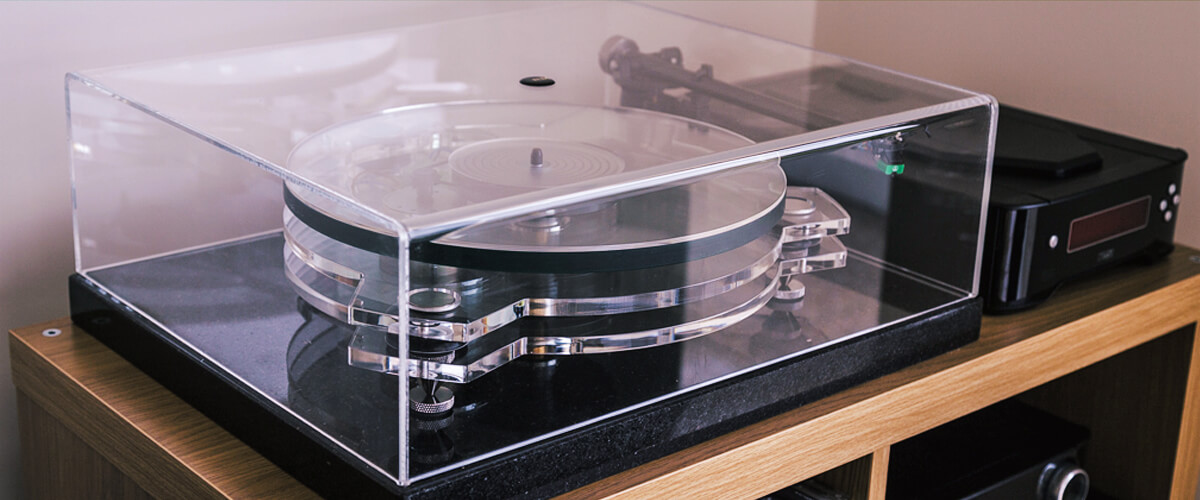
I’ve undergone numerous upgrades to my setup over the years, experimenting with various components. So, I know firsthand — not all record player upgrades may yield significant results.
In my journey, I found that upgrading the cartridge and stylus made a notable difference in sound quality. On the other hand, I discovered that some high-end RCA cables offered only marginal improvements compared to more affordable options.
Considering this, you may want to prioritize upgrades to make sure you make the most out of every improvement. So, here is the approach I recommend you take.
When selecting upgrades, first focus on the components directly affecting sound reproduction, such as the cartridge, stylus, and tonearm. Upgrading the motor and power supply can also bring about noticeable sound quality and stability improvements.
Next, consider your budget and weigh the potential benefits of each upgrade against the cost. Start with basic improvements like a better platter mat or phono preamp, often providing a good investment return.
Also, note that some upgrades are not worth the investment for an average vinyl lover. For example, expensive cables, exotic platter mats, high-end isolation platforms, and turntable weights and clamps. The improvements they bring can be minimal, but they will cost you a tidy sum. But again, it’s all about the taste and the level of modifications you would like to achieve.
Finally, don’t overlook the importance of proper setup and maintenance. Regularly cleaning your records and stylus, as well as ensuring your turntable is correctly calibrated, can contribute significantly to sound quality without breaking the bank.




